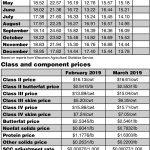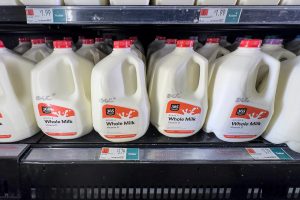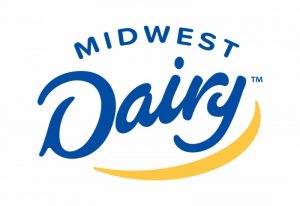
However, the Interstate 29 corridor in South Dakota has still seen fairly steady growth in dairy cow numbers and expansion of key processing facilities.
As a result, dairy producers are looking ahead with some optimism. That attitude was apparent among those attending the Central Plains Dairy Expo in Sioux Falls March 26-28.
South Dakota Dairy Producers Association President Marv Post, who farms near Volga, says South Dakota normally sees about a 5% loss of dairies on an annual basis and in 2018, the state lost some smaller operations because of low return on investment, lifestyle change and the agricultural labor crisis. However, he says the I-29 corridor is still seeing expansion of the herd.
“In cow numbers, we continue to grow,” Post says. “We are looking to increase our cows about 40,000 in the next year, year and a half and so we’re excited about the growth in the dairy industry in South Dakota.”
Some of the need for additional cows is related to the expansion of the dairy processing business. Valley Queen Cheese put a $50 million investment into its facility in Milbank, which increases the firm’s processing capacity by 25% to more than 5 million pounds of milk per day. Agropur has also just completed its project in Lake Norden. That move increases daily milk processing capacity at that facility from 3 million pounds to more than 9 million pounds, which is equal to the output of an additional 85,000 cows.
Dairy farmers have been struggling to survive with the low milk prices for the last four years. However, Post says there is some light at the end of the tunnel. “We’ve seen $1 increase just in the last month.”
He says they’re also looking forward to the implementation of the new farm bill to provide a better safety net for dairy producers. He says that in South Dakota, the new dairy program will be beneficial, due to the wide basis on input costs and because milk prices are generally above the national average. So, Post says he thinks dairy farmers will benefit on both ends.
“Tier 1 is very favorable for the smaller operation. So, any farm at 5 million pounds or less annually should sign up,” he says. The program will be retroactive to the first of the year. Signup is expected to start in the middle of June and the checks will come shortly after that.
Another positive is the effort the industry is making to increase domestic and international consumption of dairy products.
Allen Merrill, chairman of the Midwest Dairy Association, says they are working with their national partners to use the checkoff to stimulate demand. “Taco Bell, Dominoes, KFC and McDonald’s are all industry leaders. We put food scientists in with them and they have the opportunity to work side-by-side to spur innovation because we know that is what their consumers want.” That ultimately moves more dairy products.
On the export front, the U.S. dairy industry had a record volume year in 2018, up 9% over the previous year. The total value of those sales was $5.6 billion, up 2% over the previous year. That was even with the headwinds of retaliatory tariffs and a drop in business to China. Mexico, the top market, was up 7%, but Merrill says they would like to see that market fully reopened.
Meanwhile, he says the industry is looking at ways to grow international markets and help processors export their products such as cheese and dry ingredients.
“We export 90% of the dry ingredients in the world and so it’s a huge market for us and we know we’d like to make that more of an added-value product,” Merrill says.
The United States Dairy Export Council helps the dairy industry understand the policies of those other countries, so that exporters can work within those guidelines. Merrill says, “We then share that information with the processors to see if they’re interested in exporting to those countries.”

























